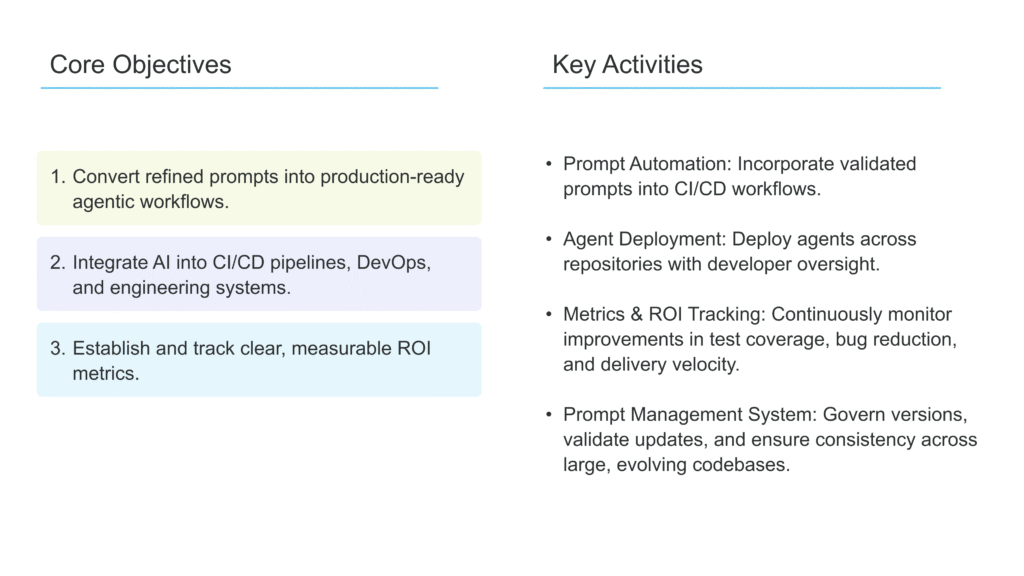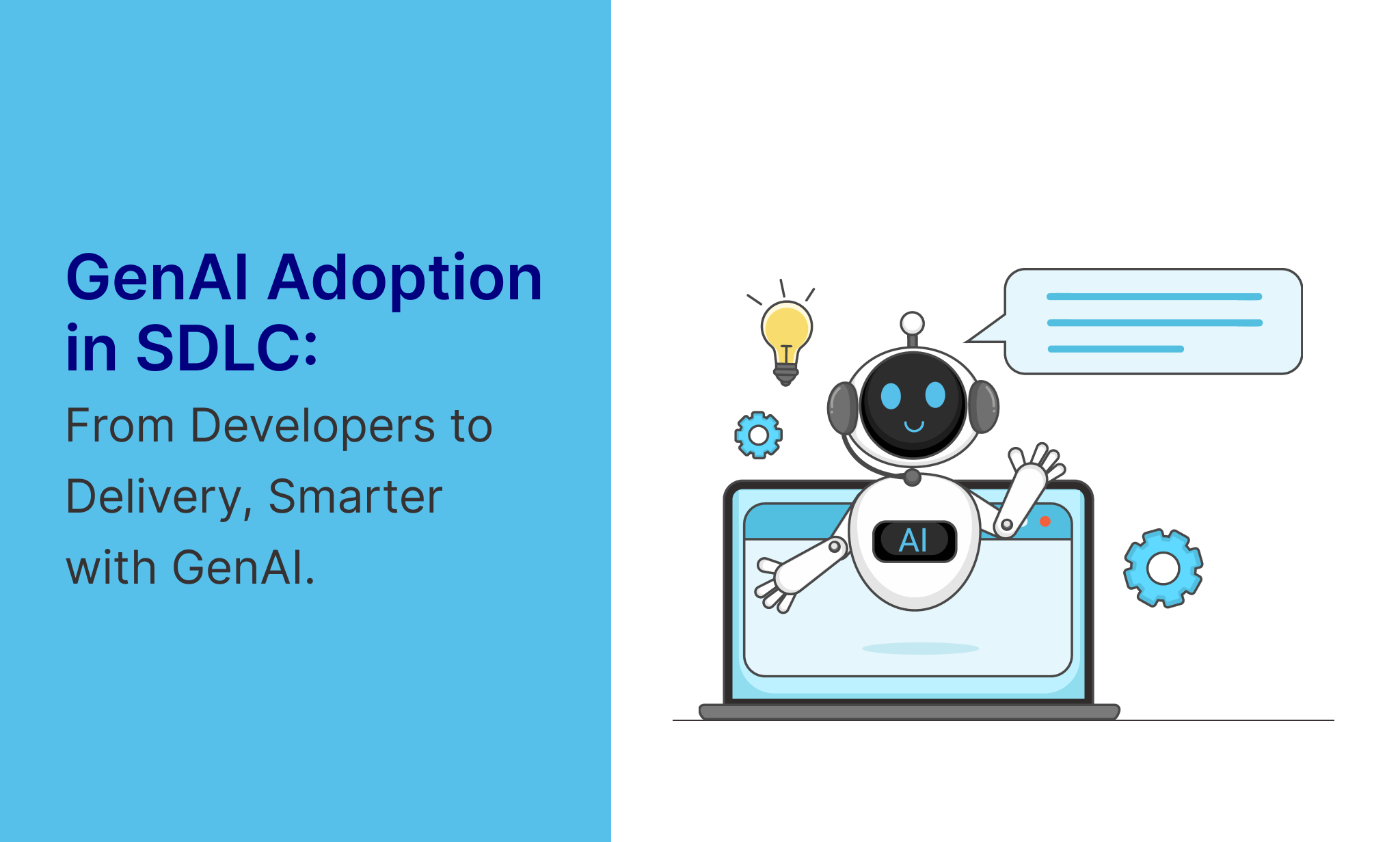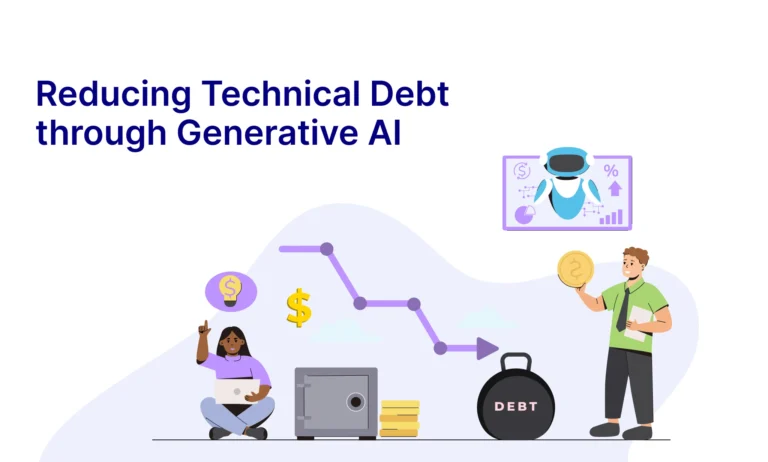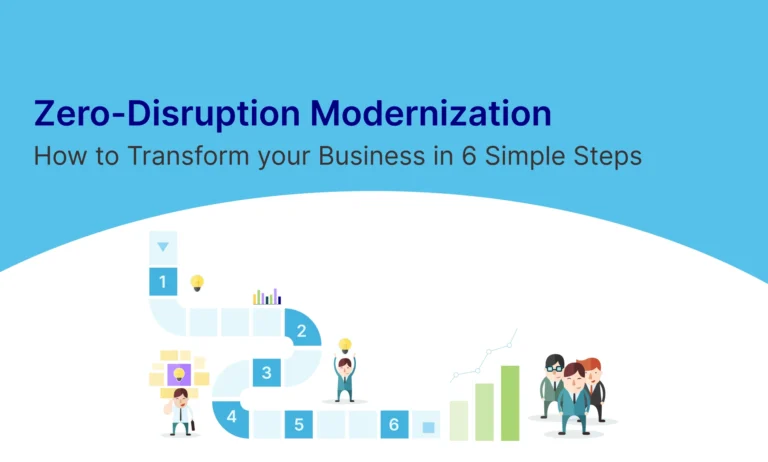Table of Contents
Introduction
Generative AI (GenAI) is no longer an experimental playground; it’s emerging as a core enabler of modern software development. Organizations are trying to embrace GenAI strategically to accelerate delivery timelines, elevate code quality, and reduce engineering overhead. But integrating GenAI into a complex SDLC isn’t as simple as installing a plugin. It demands a structured adoption strategy, one that balances developer empowerment with enterprise-grade automation.
At Byteridge, we embrace a simple truth:
Not everything can be automated with GenAI, but GenAI brings the next level of automation to our software systems. The challenge is how to embrace and continuously refine automation through iterative improvement.
In this blog, we introduce Byteridge’s Two-Phase Adoption Model: a structured approach to building Gen AI expertise internally, then transitioning to automated, context-driven workflows that transform the SDLC.
Byteridge’s Two-Phase Adoption Strategy
Phase 1: Exploration & Community-Driven Engagement
The first phase prioritizes learning, experimentation, and community culture over automation. Developers are given the freedom and guidance to explore Gen tools hands-on, experimenting with AI to solve everyday engineering challenges.

What is BACM?
The Byteridge AI Community Management (BACM) initiative is central to Phase 1. It ensures that GenAI adoption is collaborative, visible, and embedded in the organization’s DNA.
Core Responsibilities:
· Encourage teams to integrate GenAI tools into daily workflows.
· Identify and document successful workflows and ROI.
· Standardize prompt development into reusable templates.
· Maintain a centralized repository of curated agents and prompts.
· Include a Center of Excellence/Communication Hubs where teams can discuss and post Gen AI solutions.
· Engage leadership to champion and scale adoption successes.
Roles That Drive BACM
· AI Initiators: Early adopters who experiment with coding agents, create proofs-of-concept, and showcase value.
· AI Community Managers: Facilitators who track metrics, organize events, and ensure knowledge flows across teams.
Community-Driven Adoption: Why It Works
BACM makes adoption a bottom-up movement rather than a top-down directive. Community Managers moderate forums, surface success stories, and promote experimentation. AI Initiators serve as trusted advocates, driving engagement and ensuring that every developer can access validated workflows. This grassroots-first model fosters trust, cultural alignment, and sustainable adoption while reducing resistance to AI-first practices.
By the end of Phase 1, organizations have a robust foundation of prompts, agents, and community expertise, making the shift to automation relatively seamless.
Phase 2: Automation & Enterprise Deployment
Once teams have matured their prompt libraries and established confidence in GenAI outputs, organizations can begin the shift toward enterprise-grade automation.
We know that automation with GenAI is not as straightforward as it seems, it’s like biting the bullet. To mitigate risks, ensure reliability, and manage this complexity effectively, Byteridge places a Prompt Management System at the heart of Phase 2. This enables organizations to scale automation predictably while maintaining control and visibility over AI-driven workflows.

The Power of Agent Management
As GenAI adoption accelerates, prompt usage grows exponentially, and the context of software development evolves rapidly. This means prompts must be continuously updated and aligned with the latest organizational context.
A Prompt Management System (PMS) is critical to:
· Validate, refine, and version prompts for evolving needs.
· Maintain consistency and reliability across repositories and teams.
· Empower teams to reuse, evolve, and audit agents at scale, safely and confidently.
This approach elevates GenAI from a productivity booster to a core software infrastructure capability, ensuring that automation is not only impactful but also predictable, auditable, and future-proof.
Conclusion
GenAI adoption isn’t a sprint; it’s a journey. Organizations that first empower developers and build internal Gen AI expertise will unlock exponential benefits when scaling automation.
Byteridge’s Two-Phase Adoption Model ensures that adoption is systematic, measurable, and culturally embraced. With this approach, Gen AI stops being a novelty and becomes a strategic force shaping the future of engineering culture and software delivery.








